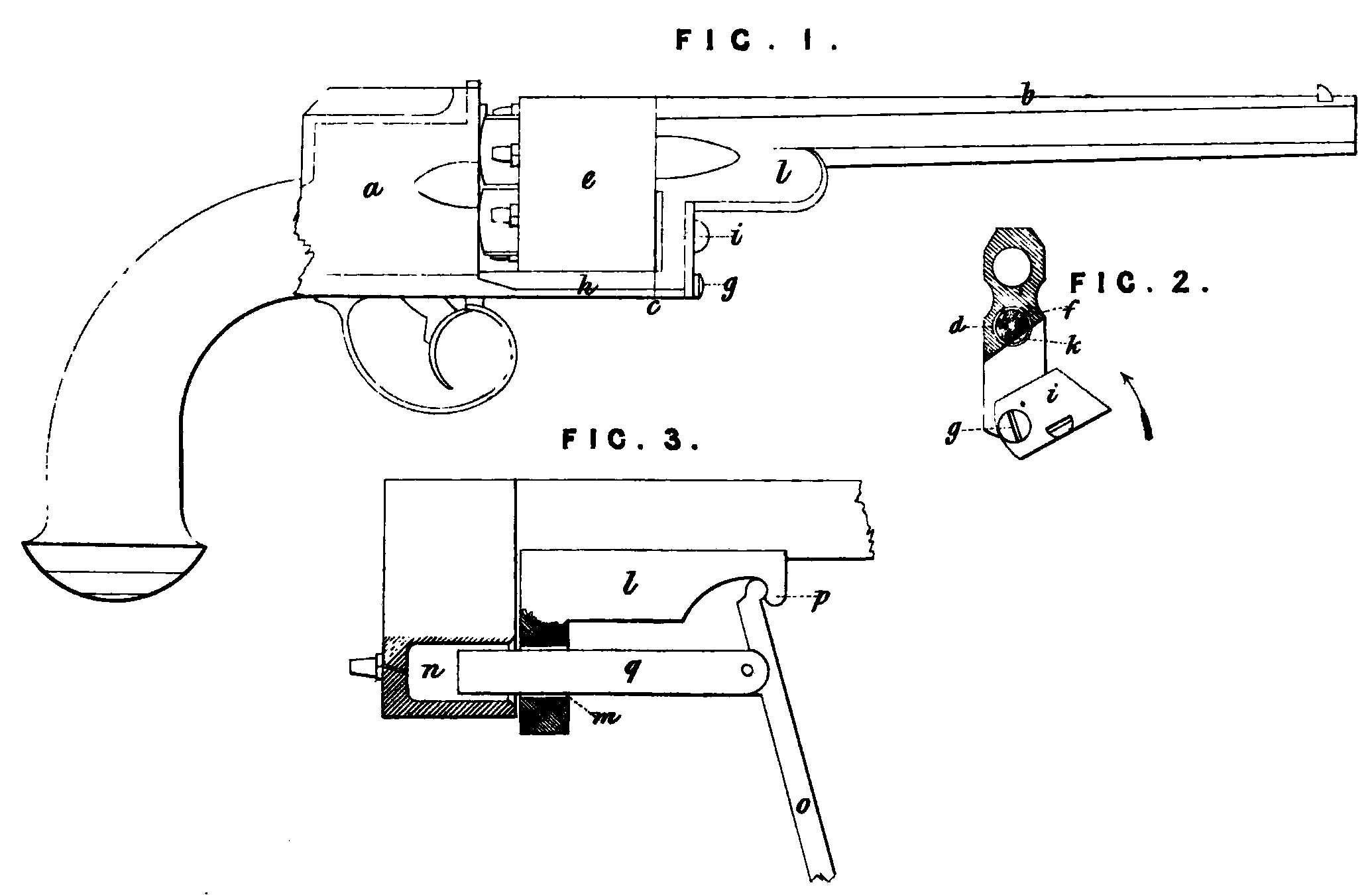Britain 1038
A.D. 1853 №1038.
Constructing Revolving or Repeating Fire-arms, and Loading the same.
PROVISIONAL SPECIFICATION left by Thomas Pennell at the Office of the Commissioners of Patents, with his Petition, on the 29th April 1853.
(Void by reason of notice to proceed not having been given within the time prescribed by the Act.)
I, Thomas Pennell, of Birmingham, in the County of Warwick, Gun Maker, do hereby declare the nature of the said Invention for “Improvements In The Construction Of Revolving Or Repeating Fire-Arms, And In Loading The Same,” to be as follows:—
My Invention consists, firstly, in encasing the hammer and other parts of the locks of repeating fire-arms in a case, as shown at a, Fig. 1, as far as the said parts can be covered or concealed, consistently with their proper action. Secondly, in the method of connecting the stationary barrel with the frame of the pistol or rifle, as shown in Fig. 1, and in front view (partly in section) in Fig. 2. The barrel 6, separates from the frame at c; on being replaced, the axis d, of the chamber e, enters the hole f, and a pin formed on the end of the screw g, enters a hole in the frame h; the bolt 7, is then pushed in the direction of the arrow Fig. 2, and its inclined edge entering a depression k, in the axis d, of the chamber e, prevents the barrel 6, being withdrawn from the said axis. Thirdly, in loading the chamber of revolving fire-arms, as represented in side view, partly in section, in Fig. 3. In carrying this part of my Invention into effect, I make the part 7, in Fig. 1, of the form represented at 1, Fig. 3; and a hole m, Fig. 3, is made through the bolt, and that part of the barrel which is connected with the frame, as shown in the said Figure 3. When the ball has been put into the chamber, the lever o, is engaged under p, as shown; and by moving the said lever the ramrod q, forces the ball. down the chamber n; the said lever and ramrod can then be immediately removed. The end of the ramrod g, may be made into a nipple key, and the end of the lever o, into a turnscrew. In applying the first and second parts of my Invention to rifles, I connect the upper part of the case a, and the upper part of the stationary barrel, by means of a folding sight.

